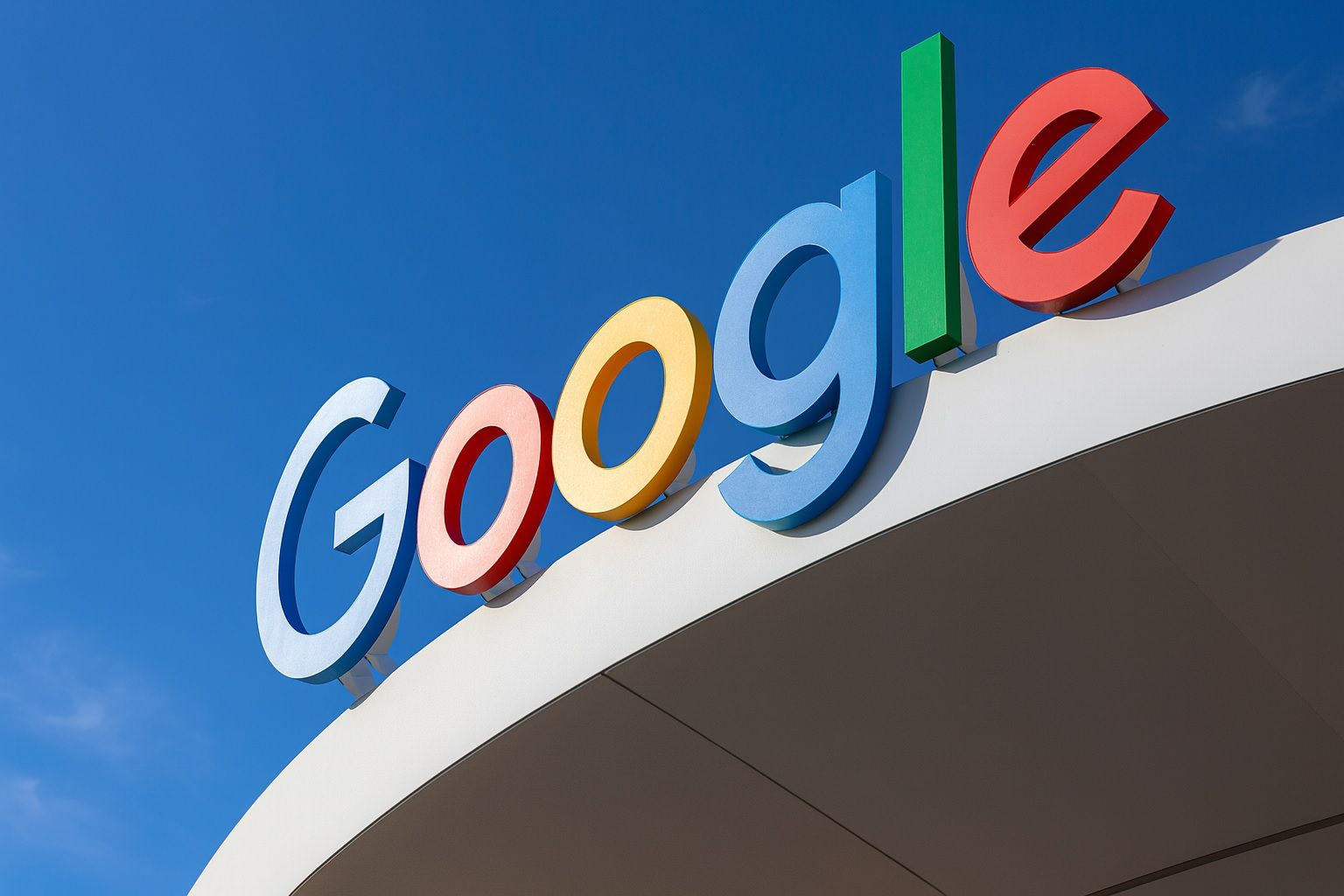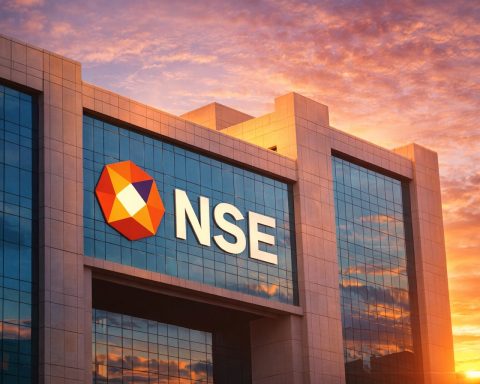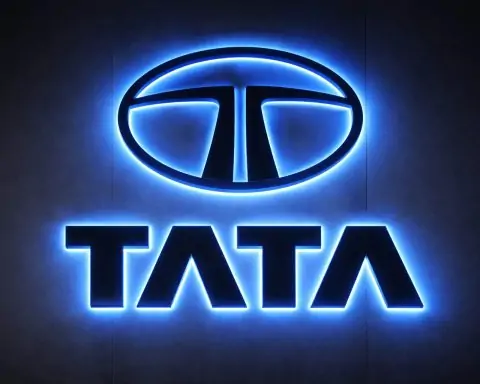- New highs: Alphabet’s stock (NASDAQ: GOOGL) is trading near its 52-week high (~$256 as of Oct. 16), up over 30% in 2025 (including a blistering +38% surge in Q3 alone) – putting Alphabet on the cusp of a $3 trillion market valuation [1]. This 52-week peak reflects a robust ~57% share price increase from a year ago, underscoring strong investor confidence [2].
- Analysts bullish: Wall Street has responded with a flurry of price target upgrades. Scotiabank hiked its target to $310 (from $240), citing a “clear recovery” in Google’s core ad business [3]. BMO Capital Markets lifted its target to $294, praising Alphabet’s “AI leadership” driving growth in Search and Cloud [4]. Overall, 30 of 38 analysts rate the stock a Buy, with an average price target around the mid-$250s [5].
- AI investments pay off: Google is pouring billions into artificial intelligence expansion. In the past week, it announced $24 billion in new AI infrastructure projects – including a $15 billion AI data center hub in India and $9 billion to expand U.S. data centers [6]. The company also rolled out AI-infused products (e.g. the Pixel 10 smartphone with a next-gen Tensor AI chip) and unveiled advanced AI models (like a new 27-billion-parameter research model) [7]. These bets are boosting Google Cloud’s growth – Q2 cloud revenue jumped 32% year-over-year (outpacing Amazon’s AWS) [8] – and highlight Google’s determination to stay ahead in the AI race.
- Ad business revival: After a mid-decade ad slump, Google’s advertising empire is back to double-digit growth. In Q2, Search advertising revenue climbed ~11.7% YoY to $54.2 billion, while YouTube ads surged 13% to $9.8 billion [9] – beating forecasts and driving total quarterly revenue up 13% (to $96.4 billion) [10]. New AI-powered search features (like generative “Search Overviews”) have kept users engaged and ad clicks strong [11]. Analysts expect these gains to continue into next year, with consensus calling for ~16% revenue growth and ~27% EPS growth in 2025 [12].
Alphabet Rallies to Record Territory
Alphabet’s share price has been on a tear, recently hitting a fresh 52-week high of $256.02 [13]. At that level, Google’s parent company is worth roughly $2.97 trillion – nearly joining the exclusive club of $3 trillion market-cap companies [14]. The stock has climbed about 30% year-to-date, vastly outpacing the broader market (the S&P 500 is up ~12% in 2025, Nasdaq-100 ~17%) [15]. Notably, Alphabet jumped 38% in the third quarter alone, its best quarterly performance since 2005 [16]. This momentum reflects strong fundamentals: over the past year the stock is up ~57%, buoyed by Google’s continued innovation in cloud computing and digital advertising [17]. The company boasts ~13% revenue growth with hefty ~59% gross margins, underlining solid execution [18].
Investors have largely shrugged off recent market jitters. In early October, tech stocks briefly dipped on geopolitical and economic worries, but Alphabet quickly rebounded to near-record levels by mid-month [19]. One catalyst was a favorable antitrust court ruling in September: a U.S. judge ruled Google would not be forced to break up Chrome or Android, removing a major overhang on the stock [20]. Alphabet’s shares spiked 9% in one day on that news [21], and sentiment remains positive despite ongoing regulatory scrutiny. (“Few expect an imminent breakup,” one analysis noted, as such drastic remedies now seem unlikely [22].) In short, AI euphoria and an ad rebound have propelled Google’s stock to heights not seen before, placing it firmly in what some call the “AI winner’s circle” of tech giants.
AI Investments and New Product Launches
Google’s recent moves show it is “all in” on artificial intelligence. In just the last few weeks, Alphabet unveiled plans to spend over $24 billion on new AI and cloud infrastructure worldwide [23]. This includes a $15 billion investment to build a massive AI data center hub in India – Google’s largest-ever investment in that country – and another $9 billion to expand its AI supercomputing facilities in South Carolina [24]. “We’re seeing a once-in-a-generation investment cycle around AI,” noted one analyst, “and Google is all in” [25]. These hefty expenditures underscore Google’s determination to maintain its lead in the AI race and meet exploding demand for AI cloud services.
At the same time, Google is rolling out AI-infused products to capitalize on its R&D. On October 4, the company’s “Made by Google” event showcased the new Pixel 10 and Pixel 10 Pro smartphones, which feature a next-gen Tensor G5 chip enabling “AI everywhere” on-device [26]. These flagship phones boast generative AI capabilities and advanced camera features powered by Google’s AI silicon. Google also introduced a Pixel Fold device and Pixel Watch 4, each loaded with AI-driven enhancements [27]. While hardware is a smaller part of Google’s business, these launches signal how the tech giant is infusing AI across its ecosystem – from consumer gadgets to its core platforms.
Google’s AI push extends to enterprise and research as well. In early October, Alphabet quietly launched “Gemini Enterprise,” a new platform to help businesses build their own AI chatbots and assistants [28]. This move positions Google to compete in providing enterprise AI solutions (e.g. vs. OpenAI’s ChatGPT Enterprise). The company also inked a high-profile deal: Google Cloud was named the official cloud provider for the 2028 Olympics in Los Angeles [29]. This partnership will leverage Google’s cloud infrastructure and AI tools – including its upcoming Gemini AI models – to power everything from event planning to media. It’s another vote of confidence in Google’s cloud and AI capabilities on the world stage.
Notably, Google’s massive AI investments are already translating into growth. Its Google Cloud segment saw revenue hit $13.6 billion in Q2, up 32% year-on-year – the fastest growth among the “Big Three” cloud providers [30]. That even outpaced AWS’s 17.5% and roughly matched Azure’s 39% jump last quarter [31] [32]. Google’s custom AI chips (TPUs) are also improving; analysts say the newest 3nm TPU shows “significant improvements” narrowing the performance gap with Nvidia’s AI chips [33]. All told, Google’s aggressive AI spending – on data centers, chips, and research – is reinforcing its competitive moat and opening new revenue streams. Little wonder the market has rewarded the stock as these AI bets begin to pay off.
Advertising Rebound Fuels Growth
Even as AI grabs headlines, Google’s advertising machine remains its profit engine – and it’s roaring back to life. After a brief slowdown last year, Google’s core ad businesses are growing at healthy double-digit rates again. In Q2 2025, Google Search advertising revenue jumped about 11.7% year-over-year to $54.2 billion [34]. Perhaps more impressively, YouTube ad sales surged 13% to $9.8 billion [35], beating analysts’ expectations and marking a strong turnaround for the video platform. Thanks to these gains, Alphabet’s total quarterly revenue reached $96.4 billion (up 13% YoY) [36] – a clear sign that advertisers are spending freely on Google’s platforms once again.
What’s driving the ad uptick? A big factor is Google’s incorporation of AI features into Search and YouTube that boost user engagement. The company’s new generative AI summaries (known as “Search Overviews”) and related AI enhancements have kept search traffic strong and users asking more complex queries – which in turn delivers more opportunities for ad impressions [37]. Google noted that AI-driven search results are leading users to make longer, more detailed searches, aiding ad monetization. On YouTube, the rollout of Shorts (short-form videos) monetization and improved ad targeting is paying off, with advertisers seeing solid returns. “Google’s ad businesses are reviving,” TS2.tech observed, as AI integration helps refresh the appeal of search and YouTube for both users and marketers [38].
Importantly, analysts expect Google’s ad momentum to continue through the rest of 2025. Wall Street consensus forecasts call for roughly 16% revenue growth and 27% EPS growth for Alphabet in 2025 [39], driven largely by double-digit gains in advertising (alongside growth in cloud services). The upcoming Q3 earnings report on Oct. 29 will be a crucial checkpoint – and many expect another strong quarter for both Search and Cloud [40]. Barring any macroeconomic setbacks, Google’s dominant position (around 90% global search market share) [41] and improving ad tech (e.g. AI tools for advertisers) give it a solid runway. That said, Google isn’t without competition in ads – from the likes of TikTok (short video ads) to Amazon (retail search ads) – but so far it has managed to defend and even grow its ad empire in the face of challengers.
Wall Street’s Take: Upgrades and Outlook
Given Google’s recent performance, it’s no surprise that sentiment on Wall Street is overwhelmingly bullish. Dozens of analysts have reiterated buy ratings on Alphabet and raised their price targets in recent weeks. “Alphabet’s stock flirts with record highs,” one analyst noted, as technical and fundamental trends improve [42]. Scotiabank, for example, just bumped its GOOGL target price from $240 to $310, citing a “clear recovery” in Google’s advertising business and a return to double-digit ad growth [43]. BMO Capital Markets similarly lifted its target to $294 and maintained an Outperform rating, praising Google’s “AI leadership” in search and cloud which is driving tangible business gains [44]. Even brokerage firms that were previously on the sidelines are turning positive: UBS recently nudged its target up to $255 on improving ad trends [45], and TipRanks reports the analyst consensus on Alphabet is now “Strong Buy,” with 30 Buys vs just 8 Holds and an average target around $258 [46].
Some of the commentary has been glowing. “GOOGL’s AI leadership continues to translate into strength in core Search and GCP… driving incremental user value,” BMO analysts wrote in a note, highlighting that Google’s ongoing AI integrations and product launches are boosting usage across its ecosystem [47]. In other words, Wall Street sees Google’s AI strategy not as hype, but as a real competitive advantage reinforcing its dominance in search and cloud. Many experts thus envision further upside for the stock. “When we look at the fundamentals – the ad recovery, the cloud growth, the AI investments – it’s a very compelling story,” said one strategist, adding that Google’s scale and innovation give it multiple paths to continue growing.
However, a few cautions are creeping in even among bulls. After such a steep run-up, valuation is one concern. Alphabet’s forward price-to-sales ratio is around 8.1×, which is higher than the industry average (~6.4×) and the tech sector overall (~6.9×) – though still below Microsoft’s 11.4× multiple [48]. Zacks Investment Research recently noted this “stretched valuation” and gave Alphabet a Rank #3 (Hold) rating, suggesting new investors may want to wait for a better entry point [49] [50]. “Alphabet’s growing AI-powered Search capabilities and significant investments in cloud computing bode well for long-term investors. Therefore, investors who have already invested… should continue to hold it,” the Zacks analyst wrote [51]. In short, virtually no one is outright bearish on Google, but some argue the stock’s lofty price already reflects a lot of the good news. The range of price targets is wide – from around $171 on the low end to $310 at the high end [52] – indicating that a minority of analysts are cautious about how much higher Google’s valuation can go without a pause.
The Road Ahead: Risks and Opportunities
Looking forward, Google will have to justify its rich valuation by delivering on the high expectations. The next big milestone is Alphabet’s Q3 earnings report on Oct. 29, when investors will see if the company’s financial results keep pace with the stock’s rapid ascent. The consensus calls for about $2.29 in earnings per share for Q3 (approximately 8% growth year-over-year) and an acceleration to ~18% EPS growth in Q4 [53]. For full-year 2025, analysts predict earnings around $9.95 per share, which would be nearly 24% higher than 2024’s result [54] – a testament to the strong rebound in Google’s ad profits and the improving economics of its cloud business. If Google meets or beats these estimates (as it has often done in recent quarters [55]), it could further validate the bulls’ case and perhaps push the stock into record territory above $260. On the horizon, other catalysts like the holiday ad spending season and the continued rollout of new AI products (e.g. Google’s next-gen Gemini AI model expected later this year) could also support growth.
That said, Alphabet faces some headwinds that investors are watching. Regulatory pressures are chief among them. In Europe and the U.K., authorities are intensifying scrutiny of Google’s market dominance – the U.K.’s CMA recently labeled Google Search as having “strategic market status,” subjecting it to special oversight and rules to curb anti-competitive behavior [56]. The EU, under its Digital Markets Act, is likewise weighing potential actions (including multibillion-dollar fines) if Google is found favoring its own services in search results [57]. And in the U.S., the Justice Department’s separate case targeting Google’s advertising technology business is ongoing, with debates over possible remedies (though any forced break-up appears unlikely in the near term) [58]. While none of these issues has derailed Google’s growth yet, they remain background risks that could resurface. Google’s victory in avoiding a breakup of Chrome/Android in the recent DOJ search case was a big relief [59], but regulators “haven’t backed off entirely” [60].
Another consideration is the broader market environment. Tech stocks have been on a huge run in 2023–2025, and some strategists warn of “frothy” valuations across the sector [61]. The Magnificent Seven mega-cap tech companies (Google among them) now trade at roughly 23× forward earnings on average – well above historical norms [62]. If interest rates remain high or the economy slows, investor appetite for high-multiple tech winners could cool. Any signs of an online advertising slowdown or cloud spending deceleration would also be taken badly by the market given the high expectations baked into Google’s stock price.
For now, however, Alphabet’s trajectory looks strong. The company is firing on multiple cylinders – revitalized advertising revenue, booming cloud/AI services, and hefty investment in future technologies – all of which reinforce its leadership in the tech industry’s most lucrative arenas. Its stock sitting near all-time highs reflects that optimism. “Alphabet rises 34% in 3 months… [its] AI and ad revival solidify an ‘AI Winner’s Circle’ status,” noted one report [63]. The key question for investors: Can Google keep up the pace? If the coming quarters confirm that AI truly is accretive to Google’s bottom line (and not just a buzzword), many analysts believe the stock’s rally could continue. On the other hand, after such a steep climb, even a slight stumble or hint of slower growth could spur profit-taking.
Bottom line: Google’s stock has ridden a wave of AI-fueled enthusiasm and advertising resurgence to the brink of a $3 trillion valuation. With big earnings and product launches on deck, the company has a chance to extend its winning streak – but it will need to execute flawlessly to justify the hype. For now, most experts advise staying bullish but selective: enjoy the ride if you’re in it, and watch closely for any signs that this tech titan’s momentum might finally be hitting its limits [64] [65].
Sources: Investor’s Business Daily; Zacks Investment Research; Investing.com; TechStock² (TS2.tech) [66] [67] [68] [69] [70] [71] and others.
References
1. ts2.tech, 2. www.investing.com, 3. ts2.tech, 4. ts2.tech, 5. ts2.tech, 6. ts2.tech, 7. ts2.tech, 8. ts2.tech, 9. ts2.tech, 10. ts2.tech, 11. ts2.tech, 12. ts2.tech, 13. www.investing.com, 14. ts2.tech, 15. ts2.tech, 16. ts2.tech, 17. www.investing.com, 18. www.investing.com, 19. ts2.tech, 20. ts2.tech, 21. ts2.tech, 22. ts2.tech, 23. ts2.tech, 24. ts2.tech, 25. ts2.tech, 26. ts2.tech, 27. ts2.tech, 28. ts2.tech, 29. ts2.tech, 30. ts2.tech, 31. ts2.tech, 32. ts2.tech, 33. ts2.tech, 34. ts2.tech, 35. ts2.tech, 36. ts2.tech, 37. ts2.tech, 38. ts2.tech, 39. ts2.tech, 40. ts2.tech, 41. www.nasdaq.com, 42. ts2.tech, 43. ts2.tech, 44. ts2.tech, 45. ts2.tech, 46. ts2.tech, 47. ts2.tech, 48. www.nasdaq.com, 49. www.nasdaq.com, 50. www.nasdaq.com, 51. www.nasdaq.com, 52. ts2.tech, 53. www.nasdaq.com, 54. www.nasdaq.com, 55. markets.financialcontent.com, 56. ts2.tech, 57. ts2.tech, 58. ts2.tech, 59. ts2.tech, 60. ts2.tech, 61. ts2.tech, 62. ts2.tech, 63. markets.financialcontent.com, 64. www.nasdaq.com, 65. www.nasdaq.com, 66. ts2.tech, 67. ts2.tech, 68. ts2.tech, 69. ts2.tech, 70. www.investing.com, 71. ts2.tech







